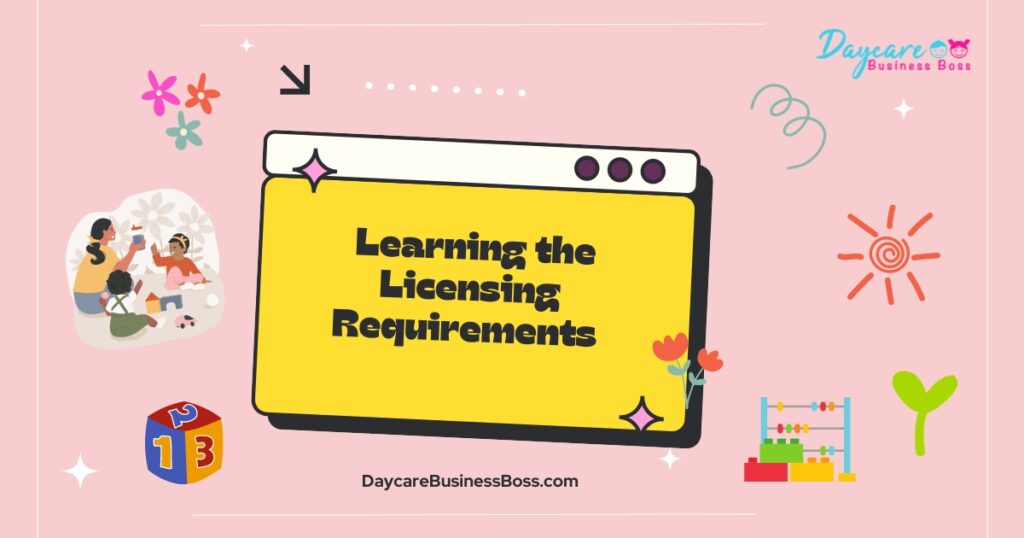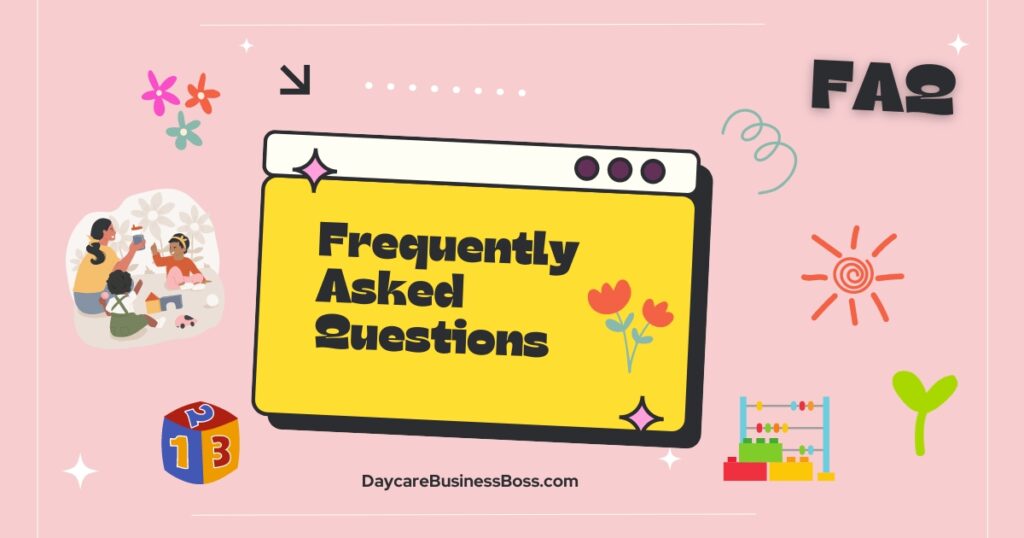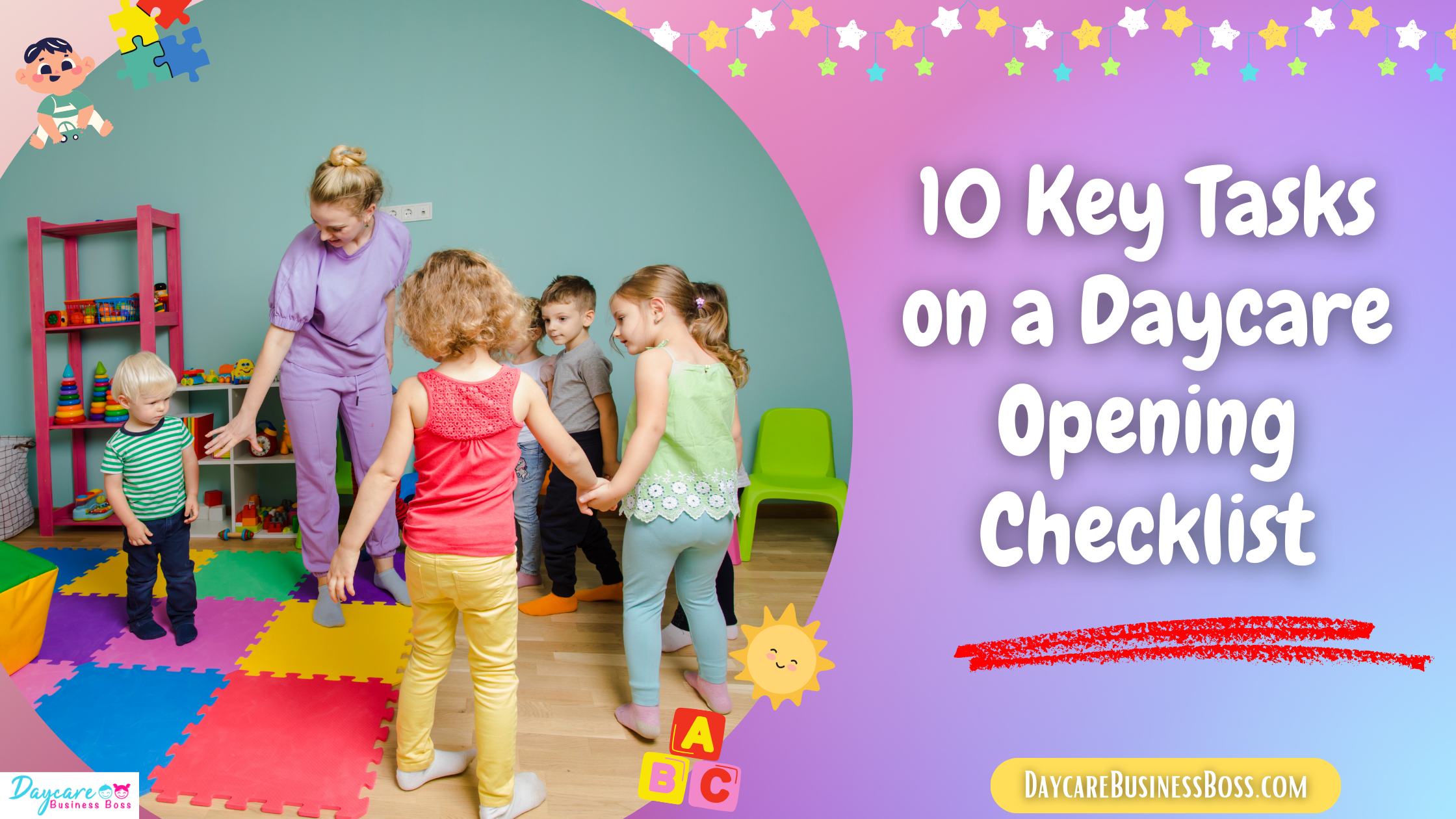If you love working with children and want to become a business owner, opening a daycare facility will be one of the most rewarding and challenging ventures you will ever experience.
Follow this daycare opening checklist to get started.
- Find your “why” of wanting to be a Daycare Owner.
- Create your daycare’s mission and vision.
- Learn the licensing regulations specific to your state.
- Pick your daycare management software.
- Select a location for your facility.
- Purchase the necessary insurance policies.
- Write your daycare handbook with pertinent procedures and policies.
- Furnish your facility.
- Hire Teachers and Teacher Aides.
- Build brand awareness in your community.
Once you have finished this checklist, you will be almost ready to open your daycare facility. You will be completing the checklist simultaneously with each other, so just be on your toes with this multi-tasking.
Find Your “Why”
What is your “why” for opening a daycare center? Maybe you were never able to have children, but you love to take care of them. You want to make that difference in your society by caring for the children that need it most while their parents and guardians are at work. Perhaps you had little siblings or cousins that you loved to care for when you were younger and felt that you wanted to make it a career as a daycare owner to help even more kids.
Whatever your “why” is, write it down and stick it on your fridge, bathroom mirror, or bedroom bulletin board. Let it be your driving force as you complete the daycare opening process. When the process reaches rough patches, look at that “why” sentence to feel revitalized in your journey to making your dream a reality.
What is Your Mission & Vision?
Now that you have determined your “why” for becoming a Daycare Owner, you can form your facility’s mission and vision. The mission statement exhibits your facility’s purpose for operating and what you want to achieve as you are in business. The vision statement displays your desired goal to reach in the future as you continue in business.
Check out Ohio’s Small Steps Big Strides Child Care’s mission and vision statements to get an idea of how you can write your own daycare’s statements.
3.
Learning the Licensing Requirements

Licensing your daycare is the very first step you should start on as you get the other smaller tasks handled on the checklist. This vital step takes the most time and should have constant follow-up to be sure that you are within licensing standards.
General daycare licensing requirements throughout the United States include:
- Criminal background checks on all of your staff.
- Mandating health physicals and Mantoux immunizations for all staff before they begin employment at your facility.
- Staff receiving health and safety training to be able to properly care for the children in their class.
- Zoning your building for safe sheltering of the children while you are in business during the day.
- Extensive child care training for all your staff with retraining as you deem necessary to be sure they still meet quality standards.
Learn more about general daycare licensing requirements and where to visit online to find out your state’s specific mandates by visiting www.childcare.gov.
Check out our blog post called Why You Should Not Start an Unlicensed Daycare to discover why unlicensed daycares are dangerous, illegal, and how it does not support your reputation as a child care facility.
Pick Your Daycare Management Software
Daycare management software helps you to organize pertinent information about your students and regulate daily tasks that would otherwise be more difficult to do the traditional way.
Choosing a management software allows your daycare to:
- Communicate with parents via text message and live videos, so they can see how their child(ren) is/are doing during the day.
- Allow online payment from parents for daycare tuition.
- Encourage ease of experience with checking in and checking out children of your facility.
- Minimize paper costs by sending newsletters and event notifications electronically through the software’s smartphone app.
Pick your daycare management software sooner rather than later. You can get everything set up on the software such as children’s information, parental contact information, and online payment set up for parents as enrollment begins. Filling in this information is better to do as you go rather than getting it later in the opening process and having to input so much information in one sitting.
Learn more about the best daycare management software programs by visiting our blog post here.
Select a Location for Your Facility
Selecting your facility’s location is a vital step in the opening checklist. You want to position your daycare in an area that will encourage high enrollment rates.
Why do you think you see daycares in plazas or in single buildings close to many different businesses? This tactic is to show parents and guardians in the nearby and surrounding businesses in the community that you are available to care for their children when they have to go to work. If your daycare is close to someone’s workplace, he or she will find that convenient in their daily work commute to be able to drop off their child in the same direction being taken to get to work.
Keep these tips in mind as you select your location.
- Try to locate yourself in the heart of your city of operation to be in a central location for all the parents in that community.
- Once you decide your location, partner with local small businesses nearby to see if they will allow you to advertise your daycare services. For example, if there is a child consignment boutique nearby you, consider asking if you can post a flyer in their business advertising your daycare services. In return, you can post a flyer on your front bulletin board for parents to see.
- If you cannot locate yourself in the heart of your chosen city, try to pick a location nearby one of the main streets, so you are not too far out of the way for parents’ commuting routes.
Purchase the Necessary Insurance Policies
As a Daycare Owner, it’s your responsibility to be sure you are holding all the necessary insurance policies to cover your facility should there be an accident of any kind.
If you are renting your facility, sign up for renter’s insurance. Since you are a place of business, you need commercial insurance for the building. You must also have commercial liability insurance and workman’s compensation insurance.
Learn more about daycare insurance policies by visiting here.
Write Your Daycare Handbook
Get your daycare handbook drafted and finalized before your grand opening. The daycare handbook holds all the procedures and policies of your facility. How does your daycare handle weather or intruder emergencies? What is the enrollment process? How do you handle a sick child and when is he/she able to return to the facility once the sickness has passed?
All of these questions and more can be answered in your daycare handbook. If you choose Hi Mama as your daycare management software, they give you a complimentary handbook template to help you get started in drafting your policies and procedures.
Furnish Your Facility
Furnish your facility once you have licensed your business and cleaned up your location’s building. This should be one of the last steps before opening day.
You need a desk and chair for your office. Get a few chairs for when the parents come to conference with you about children’s progress. Toy cubbies and bins are needed to organize all the toys in your classrooms. Educational resources such as ABC banners, number posters, ABC rugs for circle time, and more will reinforce the basic learning for children at a daycare.
Don’t forget the tables and chairs for toddlers and older children to sit and eat their lunch. If you are servicing young infants, you need enough cribs for nap time and high chairs for meal times.
Hire Teachers and Teacher’s Aides
Screen your applicants to be sure they are qualified teachers and aides.
For Teachers:
- How many years of teaching experience does he or she hold?
- What are his/her leadership experiences?
- How has he/she led and interacted with a group of children before?
For Teacher’s Aides:
- What is the nature of his/her child care experience?
- Does he/she know about general child development?
- If he/she attends college, how does their major correlate to child care?
Consider hiring Substitute Teacher’s Aides just in case the original Teacher’s Aides calls off throughout the week. A substitute pool will make sure that your facility stays within the teacher to child ratio at all times.
Build Brand Awareness
Building brand awareness will keep your enrollment rates high as more parents in the community learn about your daycare.
You can build brand awareness by:
- Passing out flyers to nearby small businesses and putting them on people’s cars.
- Completing and updating your social media pages.
- Passing out business cards to people you interact with in public.
Related Questions

- Is an opening checklist the same for a home daycare?
The opening checklist is the same for a home daycare, except if you only have 1-2 children that you watch less than 8 hours per day, you will not need to license your facility.
- Who should I hire as my Teachers?
Teachers with 3 or more years of child care and/or teaching experience with an Associates and/or Bachelors degree in Early Childhood Education are viable candidates for your facility.
Please note: This blog post is for educational purposes only and does not constitute legal advice. Please consult a legal expert to address your specific needs.
Use these tips to get started and checkout our startup course and documents here.

Meet Shawn Chun: Entrepreneur and Childcare Business Fan.
I’m a happy individual who happens to be an entrepreneur. I have owned several types of businesses in my life from a coffee shop to an import and export business to an online review business plus a few more and now I create online daycare business resources for those interested in starting new ventures. It’s demanding work but I love it. I do it for those passionate about their business and their goals. That’s why when I meet a childcare business owner, I see myself. I know how hard the struggle is to retain clients, find good employees and keep the business growing all while trying to stay competitive.
That’s why I created Daycare Business Boss: I want to help childcare business owners like you build a thriving business that brings you endless joy and supports your ideal lifestyle.

